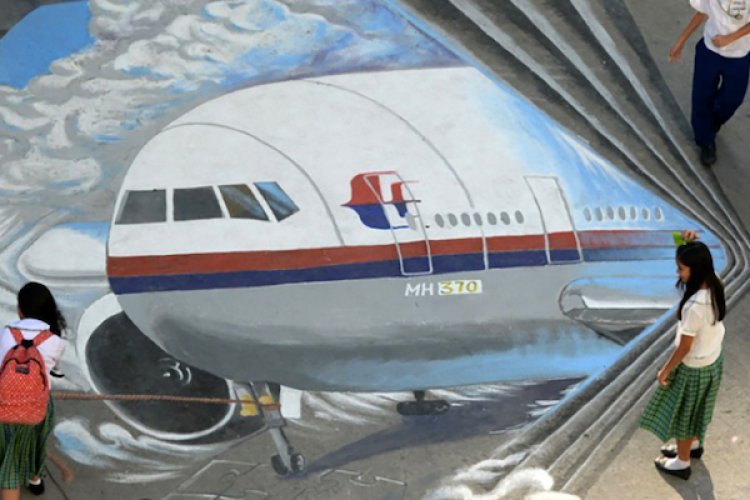5 Years On: Disappearance of Beijing-Bound MH370 Remains a Mystery
Throwback Thursday takes a look back into Beijing's past, using our 11-year-strong blog archives to glance at the news of yesteryear.
Five years ago tomorrow, Mar 8, Malaysia Airlines flight MH370 left Kuala Lumpur airport, scheduled to arrive in Beijing International Capital Airport 6 hours 30 minutes later. There are few certainties in this story but two absolutes remain: the plane never made it to its destination and its full wreckage has never been found.
The disappearance of the flight is one of the biggest aviation mysteries in history and encompasses the longest and costliest search ever conducted.

Leading up to the plane's disappearance, investigators also know that air traffic control lost contact with the plane around 40 minutes following takeoff, somewhere over the South China Sea. It then deviated west from its planned route, continuing to fly for six hours until it is assumed to have run out of fuel and crashed somewhere in the southern Indian Ocean. The 227 passengers and 12 crew on board are presumed to have all been killed in the crash.
Chinese nationals made up 152 of the 227 passengers onboard the MH370, leading to intense criticism of Malaysian Airlines and the Malaysian government by the Chinese public at what it saw as major oversights and a lack of communication regarding the investigation.
Other foreign passport holders on the flight included Canadians, French, Americans, Australians, and Malaysians, most of whom were living and working in Beijing. Among the expats that disappeared include families and students from two Beijing international schools and an executive from IBM whose partner has maintained a Facebook page dedicated to solving the mystery of what happened five years ago.
What happened?
Simply put: no one knows. The 1,500-page report released by the Malaysian government in July 2018 concluded that investigators quite frankly just did not know what happened to the aircraft. The investigators admit that unlawful third party interference seems possible because of the manual deviation of its course and abrupt ceasing of communication.
Investigators claimed that they considered every possible conspiracy theory and rumor when writing the report, and narrowed it down to seven possible scenarios. The officially accepted theory is that both the crew and the passengers were affected by an event of mass hypoxia (lack of oxygen), which rendered everyone on board unconscious. According to this theory, the plane continued to fly on autopilot until it ran out of fuel, crashing into the ocean.
What are the other theories?
Another theory proposes that the plane crashed because of unsafe cargo. Alongside 4,566kg of mangosteens, MH370 was loaded with 221kg of lithium-ion batteries, which reportedly did not undergo X-ray scanning before being loaded into the aircraft because they were too large for the scanner at the airport. The theory goes that a malfunction with the batteries could have been the reason for the accident.
Another theory points to a possible suicide pilot. The captain Zaharie Ahmad Shah had reportedly simulated a similar flight route on his home computer a month before the accident. Although the simulated flight path bears a close resemblance to the one MH370 completed on Mar 8, his family has long refuted claims that Shah was suicidal and unfit to fly.

Finally, no good mystery is complete without a few conspiracy theories. According to Hong-Kong based journalist Florence de Changy, author of Le Vol MH370 N'a Pas Disparu (Flight MH370 Did Not Disappear), the disappearance of MH370 was a cover-up.
“The official narrative on MH370 is an insult to human intelligence,” the French writer has stated. In the book, the result of years of investigation, she accuses officials responsible for the failed search missions of misdirection and states her claim that researchers were deliberately put off course, and searched for the wreckage in the wrong place.
Five-year findings released
After a significant period of investigation from multiple parties, the tragic event remains a mystery. The initial search was concluded in January 2017 and has cost over USD 160 million.
However, the catastrophe has prompted the aviation industry to impose higher safety and communication standards such as the introduction of the new Global Aeronautics Safety and Distress System (GADSS) in 2016. Under this system, aircraft are now required to transmit communication every 15 minutes instead of the previous hourly intervals. The first flight to use the GADSS system took off in November 2018.
On Mar 3, relatives of missing passengers were given new hope after Malaysian Transport Minister Anthony Loke claimed that the Malaysian government is "more than willing" to resume the search if a fresh plan is proposed. For now, however, we and the many families affected by the crash are no closer to finding out what truly happened to MH370 than we were five years ago.
Click here for our full coverage of the MH370 flight disappearance.
More by this author here.
Email: tautviledaugelaite@thebeijinger.com







